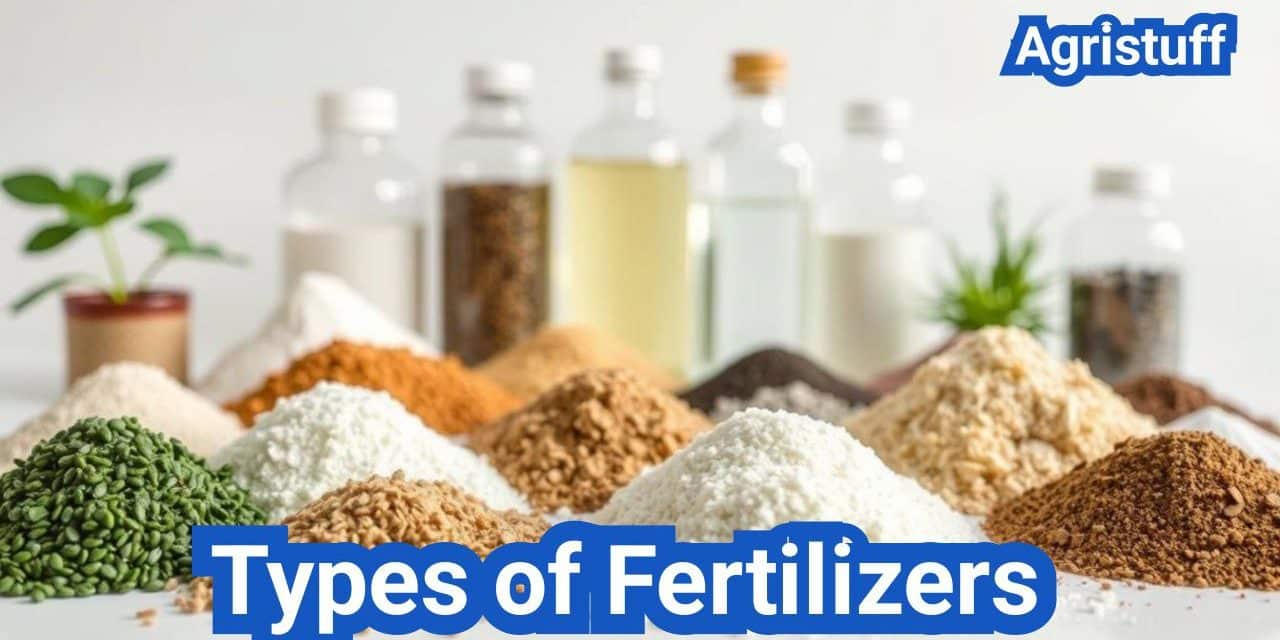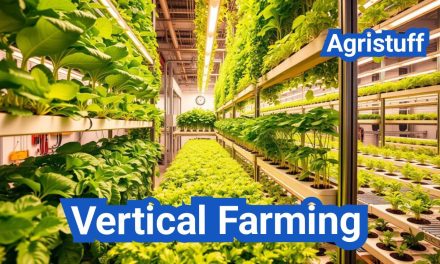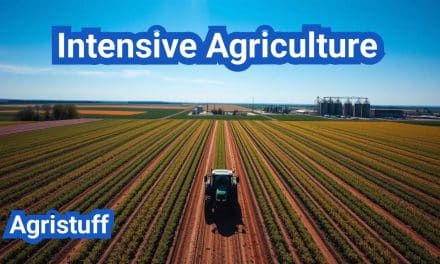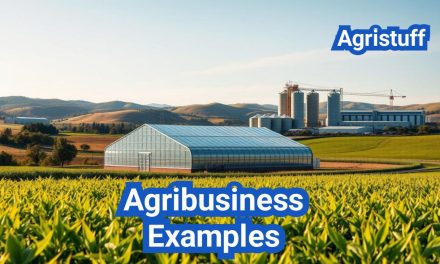Plants require essential nutrients for optimal growth and development. Nutrients are vital for plants to thrive, and one way to ensure they receive these nutrients is through the use of various fertilizers. The right fertilizer can significantly impact plant health, yield, and overall appearance.
There are several options available, including organic and inorganic fertilizers, each with its unique benefits. Liquid and granular fertilizers are also popular choices among gardeners and farmers. Understanding the different categories and their applications is crucial for selecting the best product for your plants.
Key Takeaways
- Plants require essential nutrients for growth and development.
- Fertilizers provide necessary nutrients for optimal plant health.
- Different types of fertilizers cater to various plant needs.
- Organic and inorganic fertilizers have distinct benefits.
- Liquid and granular fertilizers are popular among gardeners.
Understanding the Basics of Fertilizers
At its core, fertilizers are materials applied to soil to improve its fertility and support plant growth. Fertilizers provide essential nutrients that plants need to grow and thrive.
What Are Fertilizers and Why Are They Important?
Fertilizers are substances added to the soil to promote plant growth and fertility. They are crucial in agriculture and gardening as they replenish the soil with nutrients that are consumed or depleted over time.
Nutrient-rich fertilizers are particularly valuable as they contain a broad spectrum of nutrients necessary for healthy plant development.
The Role of Nutrients in Plant Growth
Plants require a variety of nutrients, which they obtain from the soil through their roots. These nutrients are categorized into macronutrients and micronutrients, both of which are vital for different aspects of plant growth.
Nitrogen, Phosphorus, and Potassium are the three primary macronutrients that fertilizers typically contain, playing critical roles in leaf growth, root development, and overall plant health.
NPK Ratio Explained
The NPK ratio refers to the proportion of Nitrogen (N), Phosphorus (P), and Potassium (K) in a fertilizer. Understanding the NPK ratio is essential for selecting the right fertilizer for specific plant needs.
Different plants and growth stages require different NPK ratios. For instance, nitrogen-rich fertilizers are ideal for leafy growth, while phosphorus-rich fertilizers support root development and flowering.
Fertilizers Types and Their Classifications

The world of fertilizers is diverse, with classifications that cater to different gardening needs. Fertilizers can be categorized based on their origin, form, release rate, and nutrient content, making it easier for gardeners to choose the right product for their plants.
By Origin: Organic vs. Inorganic
Fertilizers can be broadly classified into organic and inorganic types based on their origin. Organic fertilizers are derived from natural sources such as animal waste, compost, and bone meal. They are environmentally friendly and improve soil structure. On the other hand, inorganic fertilizers are synthetic and manufactured through chemical processes. They provide quick results but can have negative environmental impacts if not used properly.
By Form: Liquid vs. Granular
Fertilizers also come in different forms, primarily liquid and granular. Liquid fertilizers are fast-acting and easily absorbed by plants, making them ideal for foliar feeding. Granular fertilizers, however, release nutrients slowly as they dissolve in soil moisture, providing a steady supply of nutrients over time.
By Release Rate: Slow-Release vs. Fast-Acting
The release rate of fertilizers is another critical classification. Slow-release fertilizers provide nutrients to plants over an extended period, reducing the need for frequent applications. Fast-acting fertilizers, in contrast, deliver nutrients quickly, promoting rapid growth and immediate results.
By Nutrient Content: Complete vs. Single-Nutrient
Fertilizers can also be categorized based on their nutrient content. Complete fertilizers contain a balanced mix of nitrogen, phosphorus, and potassium (NPK), suitable for overall plant growth. Single-nutrient fertilizers, however, focus on providing a specific nutrient, such as nitrogen or phosphorus, to address particular deficiencies or promote specific growth aspects.
Understanding these classifications helps gardeners make informed decisions when selecting fertilizers for their gardens. By considering the origin, form, release rate, and nutrient content, gardeners can choose the most appropriate fertilizer for their plants’ needs.
Organic Fertilizers: Benefits and Varieties
Derived from natural sources, organic fertilizers offer a safer alternative to synthetic fertilizers for plant nutrition. These natural fertilizers provide essential nutrients to plants while improving soil health and structure.
Compost and Manure | Types of Fertilizers
Compost and manure are two of the most commonly used organic fertilizers. Compost is made by decomposing organic matter, such as food scraps and yard trimmings, into a nutrient-rich soil amendment. Manure, on the other hand, is derived from animal waste and is high in nutrients like nitrogen, phosphorus, and potassium.
The benefits of using compost and manure include improved soil fertility, increased crop yields, and reduced waste. However, they can be bulky and require significant labor to apply.
Bone Meal and Blood Meal | Types of Fertilizers
Bone meal and blood meal are high-protein organic fertilizers that provide nitrogen and phosphorus to plants. Bone meal is made from ground animal bones, while blood meal is derived from dried animal blood.
These fertilizers are particularly beneficial for plants that require high levels of nitrogen and phosphorus, such as flowering plants and vegetables.
Fish Emulsion and Seaweed | Types of Fertilizers
Fish emulsion and seaweed are liquid organic fertilizers that provide a quick boost of nutrients to plants. Fish emulsion is made by blending fish waste into a liquid fertilizer, while seaweed is harvested from ocean waters and processed into a nutrient-rich extract.
These fertilizers are rich in micronutrients and can help promote healthy plant growth and development.
Advantages and Limitations of Organic Options
Organic fertilizers have several advantages, including improved soil health, reduced environmental pollution, and increased crop yields. However, they can be more expensive than synthetic fertilizers and may require more labor to apply.
| Type of Organic Fertilizer | Nutrient Content | Benefits |
|---|---|---|
| Compost | N, P, K, micronutrients | Improves soil structure, fertility |
| Manure | N, P, K | High in nutrients, improves soil fertility |
| Bone Meal | P, N | Promotes root development, flowering |
| Fish Emulsion | N, P, micronutrients | Quick nutrient boost, promotes healthy growth |
Inorganic (Synthetic) Fertilizers: Pros and Cons

Synthetic fertilizers are manufactured from chemical substances and are designed to provide plants with the necessary nutrients for healthy growth and development. These fertilizers have become a crucial component in modern agriculture due to their ability to promote rapid nutrient uptake, leading to improved crop yields.
Chemical Composition and Manufacturing | Types of Fertilizers
Inorganic fertilizers are typically made from mineral sources or are synthesized through chemical processes. The most common types include ammonium nitrate, urea, and diammonium phosphate. The manufacturing process involves the reaction of various chemicals to produce a product that is rich in essential nutrients such as nitrogen, phosphorus, and potassium.
The chemical composition of synthetic fertilizers can vary widely depending on their intended use. For example, fertilizers high in nitrogen are used for leafy green crops, while those with higher phosphorus content are used to promote root development and flowering.
Popular Synthetic Fertilizer Options | Types of Fertilizers
Some of the most commonly used synthetic fertilizers include:
- Ammonium nitrate: A high-nitrogen fertilizer used for crops that require a lot of nitrogen.
- Urea: A nitrogen-rich fertilizer that is often used for crops like corn and wheat.
- Diammonium phosphate: A fertilizer that contains both nitrogen and phosphorus, making it suitable for a wide range of crops.
These fertilizers are popular due to their effectiveness and relatively low cost compared to organic alternatives.
Environmental Considerations | Types of Fertilizers
While synthetic fertilizers offer many benefits, their use also raises several environmental concerns. One of the primary issues is the potential for water pollution due to runoff from fields and gardens. Synthetic fertilizers can also contribute to soil degradation over time if not used properly.
“The overuse of synthetic fertilizers can lead to soil pollution, water contamination, and loss of biodiversity.” – Environmental Protection Agency
To mitigate these risks, it’s essential to follow best practices for application and to consider the environmental impact when choosing between synthetic and organic fertilizers.
When to Choose Synthetic Over Organic | Types of Fertilizers
Synthetic fertilizers are often preferred in situations where a quick response is needed, such as correcting a nutrient deficiency or promoting rapid growth. They are also useful in large-scale agricultural operations where the cost-effectiveness and efficiency of synthetic fertilizers can be advantageous.
However, the decision to use synthetic fertilizers should be based on careful consideration of the specific needs of the crop, soil conditions, and potential environmental impacts.
Nitrogen-Based Fertilizers: Types and Applications
Nitrogen is a vital nutrient for plants, and nitrogen-based fertilizers are designed to meet this critical need. These fertilizers are crucial for promoting healthy plant growth, particularly in the development of leaves and stems.
Importance of Nitrogen for Plants | Types of Fertilizers
Nitrogen is a fundamental element in the structure of amino acids, which are the building blocks of proteins. Plants require nitrogen to synthesize proteins, nucleic acids, and chlorophyll. Without sufficient nitrogen, plants may exhibit stunted growth, yellowing leaves, and reduced yields.
Ammonium Nitrate and Urea | Types of Fertilizers
Two of the most commonly used nitrogen-based fertilizers are ammonium nitrate and urea. Ammonium nitrate is highly soluble in water and provides a quick release of nitrogen. Urea, on the other hand, is a concentrated source of nitrogen that is often used in granular form. Both are effective but require careful application to avoid over-fertilization.
High-Nitrogen Fertilizers for Leafy Growth | Types of Fertilizers
For plants that require a boost in leafy growth, such as leafy greens and certain vegetables, high-nitrogen fertilizers are particularly beneficial. These fertilizers promote lush foliage and are often used in the early stages of plant development.
Application Timing and Methods | Types of Fertilizers
The timing and method of application for nitrogen-based fertilizers can significantly impact their effectiveness. Generally, nitrogen fertilizers are applied during the growing season when plants are actively producing new growth. The method of application, whether through broadcasting, side-dressing, or fertigation, depends on the type of crop, soil conditions, and equipment available.
Phosphorus-Rich Fertilizers: When and How to Use

Phosphorus-rich fertilizers play a crucial role in promoting healthy root development and flowering in plants. Phosphorus is one of the three primary macronutrients that plants need to thrive, alongside nitrogen and potassium.
Role of Phosphorus in Root Development and Flowering | Types of Fertilizers
Phosphorus is essential for various plant functions, including root development, flower and fruit formation, and overall plant maturation. It is a key component of DNA, RNA, and ATP, molecules that are vital for plant growth and energy transfer.
Key benefits of phosphorus for plants include:
- Enhanced root development
- Improved flowering and fruiting
- Increased resistance to disease
- Better overall plant growth and development
Rock Phosphate and Superphosphate | Types of Fertilizers
Two common sources of phosphorus-rich fertilizers are rock phosphate and superphosphate. Rock phosphate is a naturally occurring mineral that is rich in phosphorus, while superphosphate is a processed fertilizer product that is made by treating rock phosphate with sulfuric acid.
| Fertilizer Type | Phosphorus Content | Release Rate |
|---|---|---|
| Rock Phosphate | 20-30% | Slow |
| Superphosphate | 40-50% | Fast |
Best Practices for Application | Types of Fertilizers
To maximize the effectiveness of phosphorus-rich fertilizers, it’s crucial to follow best practices for application. This includes:
- Soil testing to determine phosphorus levels
- Choosing the right type of phosphorus fertilizer based on soil type and plant needs
- Applying fertilizers at the correct rate and timing
Avoiding Phosphorus Runoff | Types of Fertilizers
Phosphorus runoff can lead to environmental issues, including water pollution and eutrophication. To avoid this, gardeners should:
- Use phosphorus fertilizers judiciously, avoiding over-application
- Implement conservation tillage and cover cropping to reduce soil erosion
- Create buffer zones around water bodies to catch sediment and nutrients
By understanding the role of phosphorus-rich fertilizers and following best practices for their application, gardeners can promote healthy plant growth while minimizing environmental impact.
Potassium-Based Fertilizers: Enhancing Plant Resilience

Potassium-based fertilizers play a crucial role in enhancing plant resilience against various environmental stresses. Potassium is an essential nutrient that helps strengthen plants, making them more resistant to disease and drought.
How Potassium Strengthens Plants | Types of Fertilizers
Potassium is vital for overall plant health, influencing various physiological processes. It helps regulate water balance, supports the synthesis of proteins and carbohydrates, and enhances the plant’s ability to withstand stress. Plants deficient in potassium are more susceptible to disease and pests, making potassium-based fertilizers a valuable tool for gardeners.
Potash and Other Potassium Sources | Types of Fertilizers
Potash, a potassium-rich substance, is one of the most common sources of potassium for plants. Other potassium sources include potassium sulfate and potassium nitrate. These fertilizers can be applied in various forms, including granular and liquid, allowing for flexibility in application methods.
When to Apply Potassium-Rich Fertilizers | Types of Fertilizers
The timing of potassium-rich fertilizer application depends on the plant’s growth stage and nutritional needs. Generally, potassium is applied during the growing season when plants are actively producing new growth. Soil testing can help determine the potassium levels, guiding the application rate and timing.
Signs of Potassium Deficiency | Types of Fertilizers
Identifying potassium deficiency is crucial for timely intervention. Common signs include yellowing or browning of leaf edges, weak stems, and reduced yields. Prompt application of potassium-based fertilizers can alleviate these symptoms and restore plant health.
By understanding the role of potassium in plant health and using potassium-based fertilizers effectively, gardeners can enhance plant resilience and promote healthy growth.
Micronutrient Fertilizers: Addressing Specific Deficiencies

Understanding the importance of micronutrient fertilizers can help gardeners and farmers address deficiencies and promote healthy plant development. Micronutrients, though required in smaller quantities compared to macronutrients, play a vital role in various physiological processes in plants.
Essential Micronutrients for Plant Health | Types of Fertilizers
Micronutrients such as iron, zinc, manganese, copper, boron, and molybdenum are crucial for plant health. They are involved in processes like photosynthesis, nutrient uptake, and enzyme production. For instance, iron is essential for the formation of chlorophyll, while zinc plays a key role in enzyme function and protein synthesis.
Iron, Zinc, and Manganese Supplements | Types of Fertilizers
Supplements containing iron, zinc, and manganese can be used to correct deficiencies in these micronutrients. Iron supplements can help alleviate chlorosis, a condition characterized by yellowing leaves due to insufficient iron. Zinc supplements promote healthy growth and development, while manganese supplements support photosynthesis and enzyme activity.
Identifying Micronutrient Deficiencies | Types of Fertilizers
Identifying micronutrient deficiencies requires careful observation of plant symptoms. Common signs include discoloration, stunted growth, and distorted leaves. For example, iron deficiency often manifests as interveinal chlorosis, where the veins remain green while the areas between them turn yellow.
Balanced Fertilizers with Micronutrients | Types of Fertilizers
Using balanced fertilizers that include micronutrients can help prevent deficiencies. These fertilizers provide a broad spectrum of nutrients, ensuring that plants receive everything they need for optimal growth. When selecting a fertilizer, it’s essential to consider the specific needs of your plants and the existing soil conditions.
Liquid Fertilizers: Benefits and Application Methods

Liquid fertilizers are revolutionizing the way we feed our plants, offering a range of benefits and application techniques. These fertilizers provide essential nutrients in a readily available form, making them highly effective for plant growth.
Water-Soluble Fertilizers | Types of Fertilizers
Water-soluble fertilizers are a type of liquid fertilizer that dissolves in water, making it easy to provide plants with necessary nutrients. They are particularly useful for plants that require immediate nourishment.
Benefits of Water-Soluble Fertilizers:
- Quick nutrient uptake
- Easy to apply
- Versatile for various plant types
Foliar Feeding Techniques | Types of Fertilizers
Foliar feeding involves spraying liquid fertilizers directly on the leaves of plants. This method allows for rapid absorption of nutrients, promoting healthy growth.
Tips for Effective Foliar Feeding:
- Use a fine spray to avoid damaging leaves
- Apply during cooler parts of the day
- Ensure even coverage
Hydroponic Nutrient Solutions | Types of Fertilizers
Hydroponic systems rely on liquid fertilizers to provide plants with the necessary nutrients. These solutions are carefully formulated to meet the specific needs of plants grown in hydroponic setups.
Key Considerations for Hydroponic Nutrient Solutions:
- Balance of NPK and other micronutrients
- pH levels suitable for plant absorption
- Regular monitoring of nutrient levels
DIY Liquid Fertilizer Recipes | Types of Fertilizers
For those interested in homemade solutions, DIY liquid fertilizer recipes offer a cost-effective and customizable alternative. These can be made using various organic materials.
Examples of DIY Liquid Fertilizers:
- Compost tea
- Manure tea
- Fish emulsion
By understanding the different types and application methods of liquid fertilizers, gardeners can make informed decisions to enhance their plant’s growth and health.
Granular and Slow-Release Fertilizers

Granular and slow-release fertilizers have revolutionized the way gardeners nourish their plants, offering a convenient and effective solution for long-term nutrient delivery. These fertilizers are designed to release nutrients slowly over time, providing plants with a steady supply of essential nutrients.
Types of Granular Products | Types of Fertilizers
Granular fertilizers come in various forms, including organic and inorganic options. Organic granular fertilizers are made from natural materials such as compost, manure, or bone meal, while inorganic granular fertilizers are synthesized from chemical compounds.
Some popular types of granular fertilizers include:
- Compost-based granular fertilizers
- Manure-based granular fertilizers
- Synthetic granular fertilizers with NPK ratios
How Slow-Release Technology Works | Types of Fertilizers
Slow-release technology is designed to release nutrients gradually, reducing the need for frequent applications. This is achieved through various mechanisms, such as coating the fertilizer granules with a semi-permeable material or using sulfur-coated products.
The slow release of nutrients helps to:
- Promote steady plant growth
- Reduce nutrient leaching
- Minimize soil pollution
Application Rates and Methods | Types of Fertilizers
The application rate and method for granular fertilizers vary depending on the type of fertilizer and the plants being grown. Generally, granular fertilizers are applied to the soil surface or mixed into the soil.
| Fertilizer Type | Application Rate | Application Method |
|---|---|---|
| Organic Granular | 2-4 lbs per 100 sq ft | Mix into soil or apply to surface |
| Inorganic Granular | 1-2 lbs per 100 sq ft | Apply to soil surface |
Benefits for Busy Gardeners | Types of Fertilizers
Granular and slow-release fertilizers offer several benefits for busy gardeners, including reduced frequency of application, improved soil health, and increased crop yields.
By using granular and slow-release fertilizers, gardeners can:
- Save time on fertilizer applications
- Improve plant growth and development
- Reduce environmental impact
How to Choose the Right Fertilizer for Your Garden

To choose the perfect fertilizer, you need to understand your soil’s conditions, your plants’ needs, and the seasonal factors at play. Making an informed decision involves several key steps that will guide you in selecting the most appropriate fertilizer for your garden.
Importance of Soil Testing | Types of Fertilizers
Soil testing is the foundation of choosing the right fertilizer. It helps you understand your soil’s pH level and nutrient content, which are critical in determining the type of fertilizer your garden needs. Soil tests can reveal deficiencies in nitrogen, phosphorus, or potassium, among other nutrients, allowing you to select a fertilizer that addresses these specific needs.
By getting a soil test, you can avoid guesswork and ensure that you’re not wasting money on fertilizers that your soil doesn’t need. Moreover, soil testing can help you identify potential soil contaminants and take corrective measures.
Understanding Your Plants’ Needs | Types of Fertilizers
Different plants have different nutrient requirements. For instance, leafy greens require more nitrogen for leaf growth, while flowering plants need more phosphorus for bloom production. Understanding the specific needs of your plants is crucial in selecting a fertilizer that promotes healthy growth and development.
Consider the type of plants you’re growing and their growth stage. Young plants, for example, may require more nitrogen for vegetative growth, while mature plants may need more potassium for overall health and resilience.
Seasonal Considerations | Types of Fertilizers
The time of year and weather conditions also play a significant role in choosing the right fertilizer. Seasonal considerations can affect the type of fertilizer you should use and when you should apply it. For example, during the growing season, your plants may require more frequent fertilization, while during the dormant season, they may need fewer nutrients.
Additionally, weather conditions such as heavy rainfall can impact fertilizer application. In such cases, slow-release fertilizers may be more effective as they provide nutrients over a longer period.
Reading Fertilizer Labels | Types of Fertilizers
Once you’ve determined your soil’s needs and your plants’ requirements, it’s time to choose a fertilizer. Reading fertilizer labels is crucial in making an informed decision. Look for the NPK ratio, which indicates the fertilizer’s nitrogen, phosphorus, and potassium content.
Also, be aware of any additional ingredients or micronutrients that the fertilizer may contain. Some fertilizers are formulated for specific plant types or soil conditions, so it’s essential to choose one that matches your garden’s needs.
Safe Application Practices and Troubleshooting

Understanding the safe application practices for fertilizers is essential for gardeners and farmers alike. Proper application and handling of fertilizers are crucial for safety and effectiveness.
Proper Timing and Frequency | Types of Fertilizers
The timing and frequency of fertilizer application significantly impact its effectiveness. It’s essential to fertilize plants during their active growth phases.
- For most crops, the best time to apply fertilizer is during the growing season.
- Fertilizer application should be avoided during extreme weather conditions.
Avoiding Over-Fertilization | Types of Fertilizers
Over-fertilization can harm plants and the environment. It’s crucial to follow the recommended application rates.
Signs of Over-Fertilization:
- Yellowing or burning of leaves
- Stunted plant growth
- Soil salinization
Storage and Handling Safety | Types of Fertilizers
Proper storage and handling of fertilizers are vital for safety. Fertilizers should be stored in a cool, dry place, away from children and pets.
| Safety Measure | Description |
|---|---|
| Wear Protective Gear | Use gloves, masks, and protective eyewear when handling fertilizers. |
| Store in Original Containers | Keep fertilizers in their original packaging to avoid mix-ups. |
| Follow Instructions | Always follow the manufacturer’s instructions for application and storage. |
Correcting Common Fertilizer Problems | Types of Fertilizers
Common issues such as nutrient deficiencies or over-fertilization can often be corrected by adjusting application practices.
For instance, soil testing can help identify nutrient deficiencies, allowing for targeted fertilizer application.
Finally | Types of Fertilizers
Understanding the different fertilizers types is crucial for effective gardening and agriculture. This comprehensive guide has explored various organic fertilizers and inorganic fertilizers, highlighting their benefits and applications.
By recognizing the importance of fertilizer application, gardeners can promote healthy plant growth, improve crop yields, and maintain soil fertility. Whether opting for organic fertilizers like compost and manure or inorganic fertilizers for their precision and efficiency, the key is to choose the right type for specific plant needs.
Soil testing, understanding plant requirements, and considering seasonal factors are essential steps in fertilizer application. By following these guidelines and being mindful of the potential environmental impacts, gardeners can ensure a balanced and sustainable approach to fertilization.
In conclusion, the world of fertilizers is diverse, and making informed choices is vital for gardening success. By applying the knowledge gained from this guide, gardeners can optimize their fertilizer use, leading to healthier plants and more productive gardens.
FAQ
What is the main difference between organic and inorganic fertilizers?
Organic fertilizers are derived from natural sources such as compost, manure, and bone meal, while inorganic fertilizers are synthesized chemically. Organic options release nutrients slowly, whereas inorganic fertilizers provide quick nutrient availability.
How do I choose between liquid and granular fertilizers for my garden?
Liquid fertilizers are ideal for immediate nutrient delivery and foliar feeding, while granular fertilizers provide a slow release of nutrients over time. The choice depends on your plants’ immediate needs and your preferred application method.
What is the NPK ratio, and why is it important?
The NPK ratio represents the proportion of nitrogen, phosphorus, and potassium in a fertilizer. Understanding the NPK ratio is crucial because it helps you choose a fertilizer that matches your plants’ nutritional needs, promoting healthy growth and development.
How often should I apply fertilizers to my plants?
The frequency of fertilizer application depends on the type of fertilizer, plant requirements, and soil conditions. Generally, fertilizers should be applied during the growing season, following the manufacturer’s instructions for the recommended application rate.
What are the benefits of using slow-release fertilizers?
Slow-release fertilizers provide a steady supply of nutrients to plants over an extended period, reducing the need for frequent applications. This can be particularly beneficial for busy gardeners and helps prevent over-fertilization.
How do I identify micronutrient deficiencies in my plants?
Micronutrient deficiencies can be identified by observing specific symptoms such as yellowing leaves (iron deficiency), stunted growth (zinc deficiency), or interveinal chlorosis (manganese deficiency). Soil testing can also help determine micronutrient levels.
Can I make my own liquid fertilizers at home?
Yes, you can create DIY liquid fertilizers using natural ingredients like compost tea, fish emulsion, or manure tea. These homemade fertilizers can be cost-effective and provide essential nutrients to your plants.
What is the importance of soil testing before applying fertilizers?
Soil testing is crucial because it helps determine the existing nutrient levels and pH of your soil. This information allows you to choose the right type and amount of fertilizer, avoiding over-fertilization and ensuring your plants receive the necessary nutrients.
How do I read fertilizer labels effectively?
To read fertilizer labels effectively, look for the NPK ratio, the list of ingredients, and the instructions for application. Understanding the label information helps you make informed decisions about the fertilizer’s suitability for your plants’ needs.
What are the signs of over-fertilization, and how can I correct it?
Signs of over-fertilization include burned roots, yellowing leaves, and excessive vegetative growth. To correct over-fertilization, stop applying fertilizers, flush the soil with water to remove excess nutrients, and consider repotting the plant in fresh soil if necessary.
Conclusion of: Types of Fertilizers
Fertilizers play a crucial role in modern agriculture, boosting soil fertility and increasing crop yields. Understanding the types of fertilizers and their specific uses helps farmers, gardeners, and agronomists make informed decisions that optimize plant growth while minimizing environmental harm. This article explores all major types of fertilizers, their functions, advantages, and the best practices for using them effectively.
What Are Fertilizers?
Fertilizers are natural or synthetic substances added to soil or plant tissues to supply essential nutrients. The main goal is to improve the nutrient content of the soil and support healthy plant development. Most fertilizers provide one or more of the primary nutrients: nitrogen (N), phosphorus (P), and potassium (K).
External Link: University of Minnesota Extension – What are fertilizers?
Importance of Choosing the Right Fertilizer Type
Choosing the right types of fertilizers is essential for efficient nutrient management. The wrong fertilizer can harm plants, waste money, or pollute the environment. Tailoring fertilizer types to soil conditions, crops, and growth stages is a best practice in sustainable farming.
External Link: USDA NRCS – Soil Health Principles
Organic Fertilizers | Types of Fertilizers
Organic fertilizers are derived from natural sources such as compost, manure, bone meal, or fish emulsion. These fertilizers improve soil structure and enhance microbial activity, leading to long-term soil fertility.
External Link: Rodale Institute – Organic Fertilizer Guide
Inorganic (Synthetic) Fertilizers | Types of Fertilizers
Inorganic or chemical fertilizers are industrially manufactured and contain precise concentrations of nutrients. They act quickly and are highly effective but may lead to soil degradation or runoff if overused.
External Link: International Fertilizer Association – Mineral Fertilizers
Nitrogen Fertilizers
Nitrogen fertilizers boost vegetative growth and are essential for crops like corn and wheat. Common types include urea, ammonium nitrate, and ammonium sulfate.
External Link: University of Nebraska-Lincoln – Nitrogen Fertilizers
Phosphorus Fertilizers
Phosphorus promotes root development and flower/fruit production. Superphosphate and monoammonium phosphate (MAP) are widely used phosphorus fertilizers.
External Link: International Plant Nutrition Institute – Phosphorus Management
Potassium Fertilizers
Potassium enhances disease resistance, water regulation, and overall plant strength. Potassium chloride (muriate of potash) and potassium sulfate are commonly used forms.
External Link: Potash Development Association
Compound Fertilizers (NPK)
Compound fertilizers contain a mix of nitrogen, phosphorus, and potassium. They are convenient and support balanced nutrition in a single application.
External Link: FAO – Fertilizer Use and Management Practices
Micronutrient Fertilizers
While required in smaller amounts, micronutrients like zinc, iron, manganese, and boron are critical for plant health. Micronutrient deficiencies can severely affect yield and quality.
External Link: Michigan State University – Micronutrient Fertilization
Slow-Release and Controlled-Release Fertilizers
These fertilizers release nutrients gradually, reducing the frequency of application and minimizing nutrient leaching. They are ideal for long-term crops and sustainable farming.
External Link: Smart Fertilizer – Slow Release Technology
Liquid Fertilizers
Liquid fertilizers provide rapid nutrient uptake and are often used in hydroponics or foliar feeding. They allow for uniform application and quick correction of deficiencies.
External Link: PennState Extension – Liquid Fertilizers
Specialty Fertilizers (e.g., Chelated, Foliar, etc.)
Specialty fertilizers include chelated micronutrients, foliar sprays, and customized blends. These are tailored for specific crop needs or soil conditions.
External Link: The Fertilizer Institute – Fertilizer Products
Organic vs Inorganic: Which Is Better?
Both types of fertilizers have advantages. Organic options support soil health, while inorganic fertilizers deliver rapid results. The best approach often combines both, depending on crop needs and sustainability goals.
External Link: EPA – Fertilizer Basics
How to Choose the Right Fertilizer
Selecting the appropriate types of fertilizers depends on crop type, soil test results, application method, and timing. Soil testing and expert consultation are key to success.
External Link: USDA Agricultural Research Service – Soil Testing
Application Methods of Fertilizers
Fertilizers can be applied through broadcasting, side-dressing, fertigation, or foliar spraying. The method chosen influences effectiveness and efficiency.
External Link: AgriFarming – Fertilizer Application Methods
Environmental Concerns and Best Practices
Over-fertilization can cause water pollution, greenhouse gas emissions, and soil degradation. Use precision agriculture techniques to apply the right type and amount of fertilizer.
External Link: NRDC – Fertilizer Pollution
Final Thought
Understanding the types of fertilizers and how to use them properly is fundamental for sustainable agriculture and food security. Whether you opt for organic, synthetic, or a blended approach, informed choices lead to healthier crops, better yields, and reduced environmental harm.










